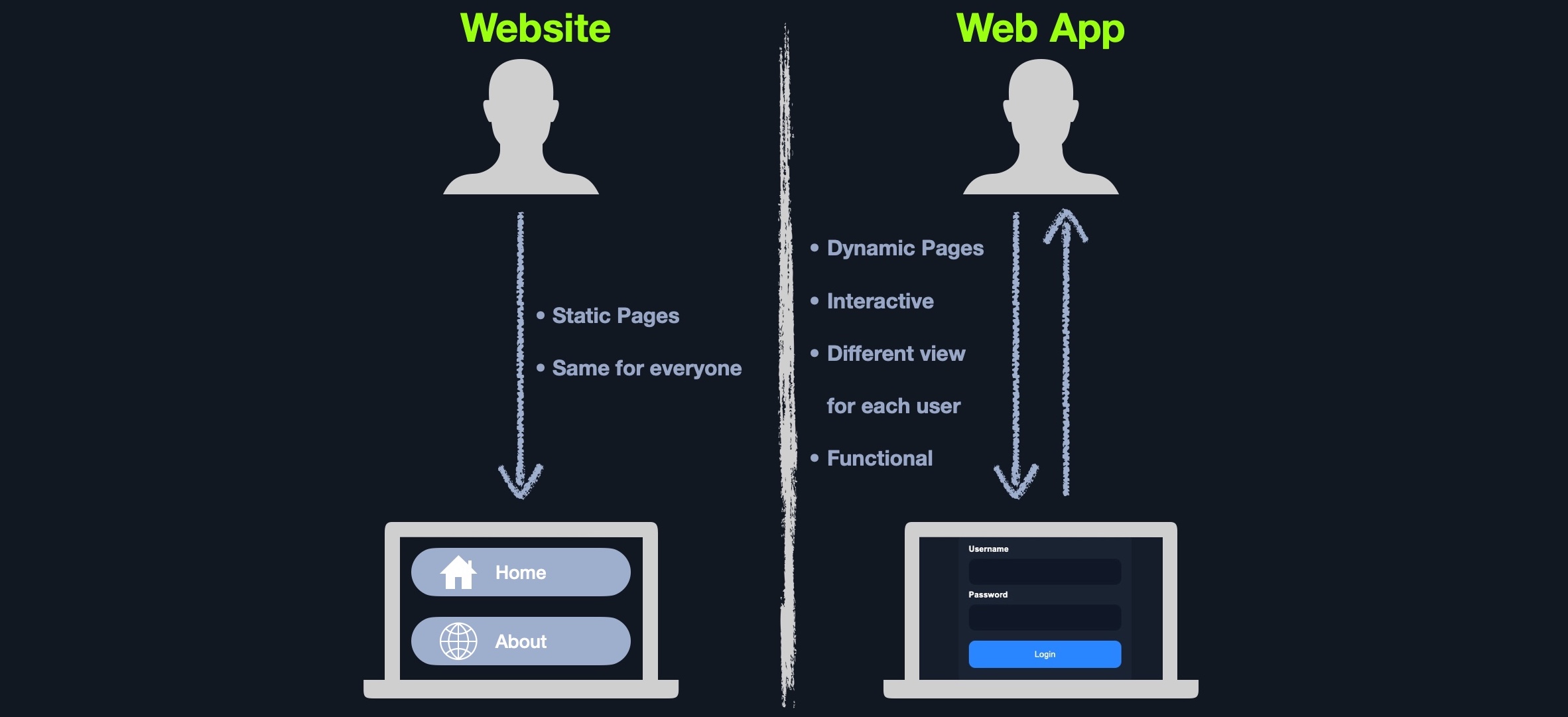Introduction To Web Applications Contents
Web applications are interactive applications that run on web browsers. Web applications usually adopt a Client-Server Architecture to run and handle interactions.
They typically have front end components (I.E. the website interface or what the user sees rendered) that run on the client-side (browser) and other back end components (web application source code) that run on the server-side (backend server/databases).
This allows large organisations to host powerful applications with near-complete real-time control over their design and functionality while being accessible worldwide. Some examples of typical web applications include online email services like Gmail, online retailers like Amazon, and online word processors like Google Docs or Microsoft Word.
Web Applications VS Websites¶
In the past, when interacting with websites, web pages were static and could not be changed in real-time. This change meant that websites that were statically created to represent specific information, and this information would not change with interaction.
In a static web page, the corresponding page has to be edited by the developers manually. These types of static pages do not contain functions and therefore do not produce real-changes. This type of traditional website is also known as Web 1.0.

Example: Website VS Web Application
Nowadays most websites run web applications or Web 2.0 which present dynamic content based on user interaction.. Another significant difference is that web applications are fully functional (unlike their static counterpart) and can perform various utilities for the end-user
Web Application differs to Static Sites¶
- Being Modular
- Running on any Display Size
- Running on any Platform without being Optimised
Web Applications VS Native Operating System Applications¶
Unlike Native OS Applications, web applications are platform-independent and can run on any browser on any operating system.